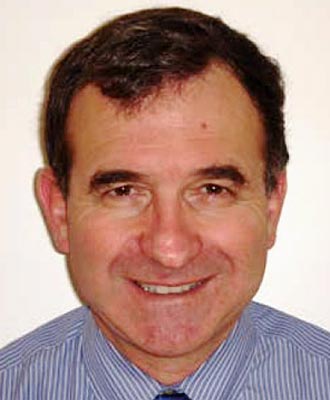To attend, please RSVP to epp@cseg.ca.
Unless we have exceeded the allowable number of people for the auditorium, we will not be replying to your email.
LunchBox Geophysics is free! Simply bring your own lunch (refreshments provided) and enjoy.
Abstract
Sometimes it is a good idea to put receivers on the seabed. Sometimes it is not. There are several considerations when deciding whether to opt for ocean-bottom technology and if so, how. Seismic surveillance for reservoir production monitoring is done in busy and noisy oilfields that are partially obstructed by production and drilling surface facilities, which present more safety and quality challenges to surface towed streamers than to seabed receivers. In addition, permanent or accurately repositioned receivers have improved repeatability for reservoir production monitoring. Other motivations to put receivers on the seabed apply also to development and exploration. With a large and dense shot carpet, seabed receivers provide full-azimuth and well-sampled common-receiver gathers. Such data are useful for imaging below complex overburden including subsalt, sub- and intrabasalt, under gas clouds, and in fault shadows. Full azimuth is also good for multiple suppression. Interestingly, multiples don't always need to be suppressed. Mirror imaging turns multiples from noise to signal. In addition to improved P-wave imaging, multi-component seabed receivers record shear waves that propagate in solids but not in liquids. Shear waves carry valuable information about lithology and fractures, and can help distinguish between effects of fluid change and pore-pressure change. Currently, however, shear waves are hardly used, even when multi-component data are acquired! The reason is that, as an industry, we are poor at managing expectations. There seem to be two groups of people: those who expect too much, and those who expect nothing at all. People move from the first group to the second, going all the way without stopping somewhere in the middle. The middle is that while we must not expect shear waves to replace P-waves, we ought to expect them to add value, because if we expect nothing we will get nothing.
The talk will review the history and the various types of ocean bottom technologies, with emphasis on ocean-bottom seismic nodes. A number of case histories, which are now public, provide valuable lessons that can prevent costly future mistakes. One type of mistake is to use ocean-bottom receivers or sources where and when they are not useful. Another type of mistake is to allow too little time or money to make a survey successful. Arguably, the most common mistake is to not go to the seabed and miss a great opportunity. This lecture will be a good opportunity for those who have done ocean bottom surveys to compare notes. For those who have never done ocean bottom surveys—sooner or later you will.
Biography
In the last 30 years, Shuki Ronen has done seismic data processing, quantitative analysis, and acquisition. In the last 15 years, he has done mostly ocean-bottom acquisition and processing. Shuki Ronen has a PhD in geophysics from Stanford University. He then worked for Saxpy Computer, the Colorado School of Mines, the Institute for Petroleum Research and Geophysics, Schlumberger, GeoQuest, Geco-Prakla, WesternGeco, VeritasDGC, Chevron, Seabird, and CGGVeritas. He is currently vice president for Ocean Bottom Technology in CGGVeritas and a consulting professor at Stanford University.





